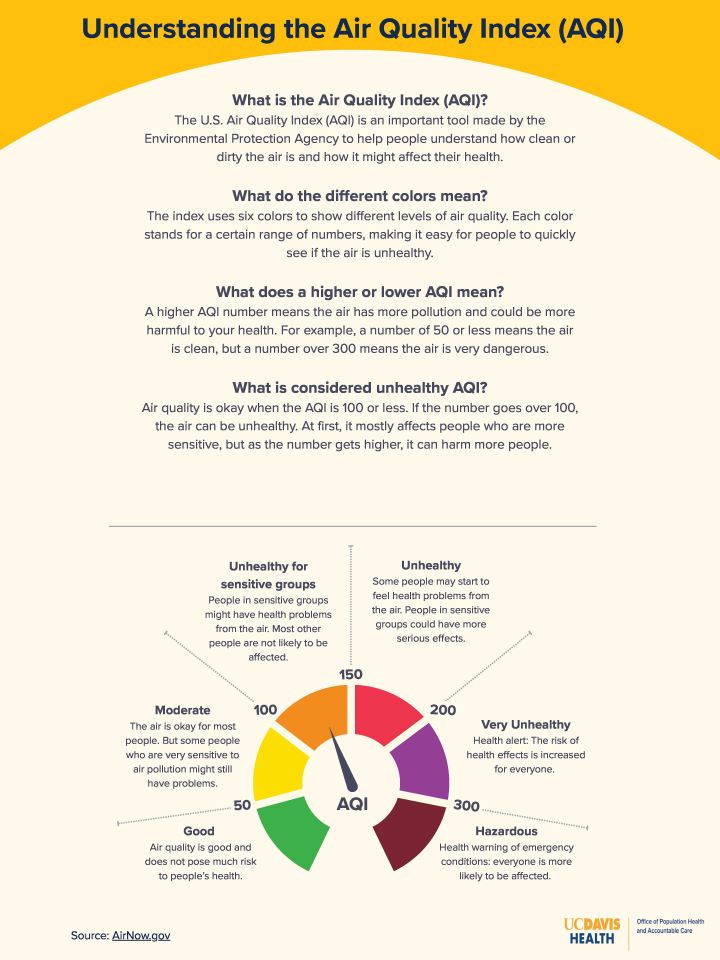Wildfire Health Information
Inhaling smoke can pose significant risks, particularly for individuals with pre-existing lung conditions (such as asthma, COPD/emphysema, and pulmonary fibrosis), heart disease, the elderly, children, and pregnant women. These vulnerable populations should exercise extra caution and consult their healthcare providers for personalized recommendations on precautionary measures. It's important to note that inhaling smoke is detrimental to everyone's health and should be avoided whenever possible.
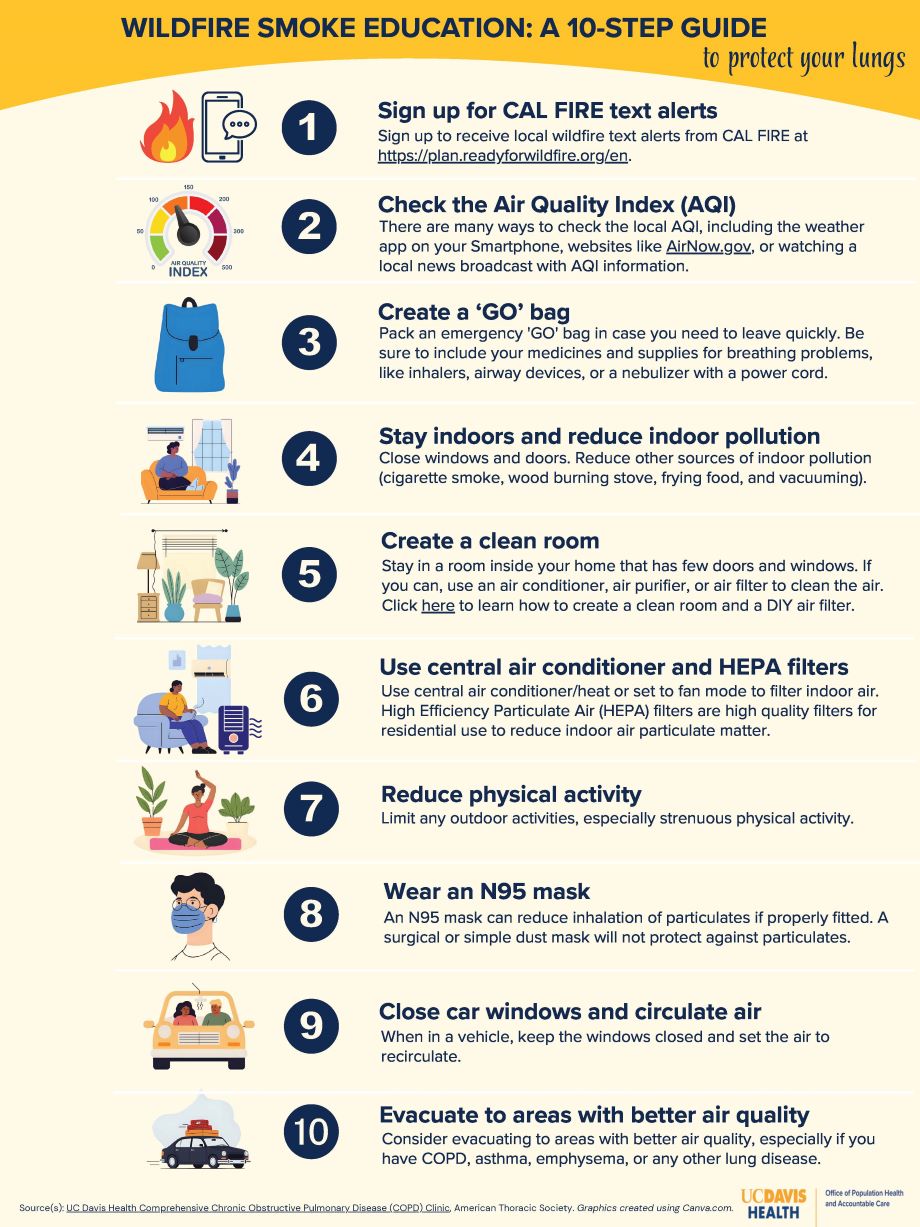
Wildfire Smoke Education: A 10-Step Guide to Protect Your Lungs (PDF)
- Sign up to receive local wildfire text alerts at CAL Fire
- Check your local air quality at AirNow.gov
- Click here to learn how to create a clean room and a DIY filter
General Instructions for Disposable Respirators- VIDEO

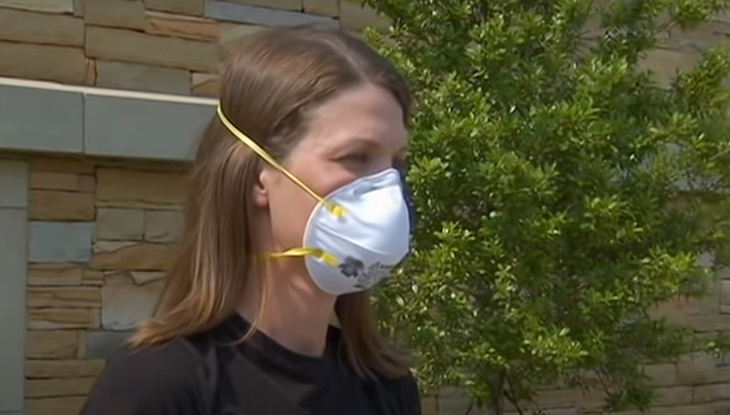
General Instructions for Disposable Respirators
Wildfire Smoke and Indoor Air Quality: How to Create a Clean Room at Home- VIDEO

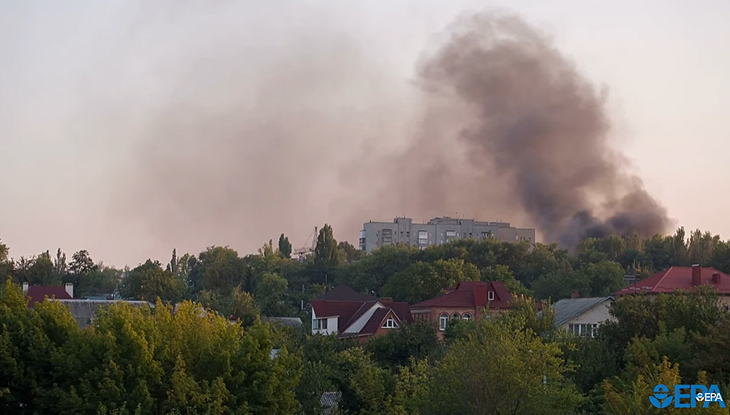
Wildfire Smoke and Indoor Air Quality: How to Create a Clean Room at Home
Almost all COPD patients have an increase in cough, mucus production and breathlessness sometimes. Being able to tell a “bad day” from an acute exacerbation is important. It is sometimes difficult to do. Some factors that may cause a bad day include:
- Weather
- Barometric Changes
- Emotions
- Allergies
- Higher Altitude
- Using an Empty Inhaler
Knowing when you are having an exacerbation: Recognize the symptoms and seek treatment early
Early warning signs of an acute exacerbation are unique to each person. Usually, you are the best person to know if you are having sustained breathing problems. However, some changes are more likely to be noticed by other persons. So, it is important to share this information with your family and those close to you. The most common signs and symptoms of an acute exacerbation are:
- Worsening of your stable condition
- Increased difficulty breathing, even at rest
- Increased wheezing
- Increased coughing
- Increase in mucus production
- A change in how the mucus looks. This may include being more thick and sticky, or having a change in color from clear or white to yellow or green, or containing blood.
- Chest tightness
- Irritability and/or change in personality
- Fluid retention (swelling in hands/feet)
- Forgetfulness, confusion, slurring of speech and sleepiness
Sometimes an acute exacerbation can come with:
- An increased feeling of fatigue and a long period of lack of energy
- Use of more pillows or sleeping in a char instead of bed to avoid shortness of breath
- Fever
- Skin tone changes to “ashen” or “blue”, especially in the fingertips and/or
- Increasing morning headaches, dizzy spells, and restlessness
- If on home oxygen, a need to increase home oxygen flow
- Rapid breathing – It is important to know your respiratory rate when you are feeling good. This is called a “baseline” rate.
- Rapid heart rate – It is also important to know your baseline heart rate.
Measuring Your Respirations for One Minute:
- Place the hand on the upper chest to feel it rise and fall. Each rise/fall cycle counts as one respiration.
- Count for 30 seconds and multiply the number by two, which equals breaths per minute.
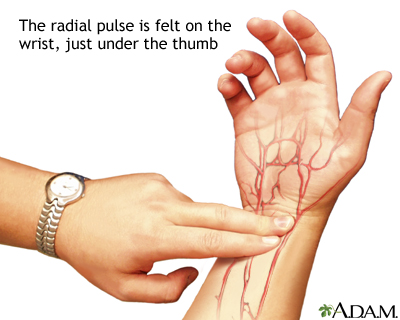
Measuring Your Heart Rate for one Minute:
- Find radial pulse. Place your index and middle finger to the thumb side of the inside of your wrist. Don’t press too hard and don’t rub.
- Count pulse for 30 seconds, and multiply the number by two, which equals your heart beats per minute or “heart rate”.
An effective measure to combat the dangers of wildfire smoke is creating a clean room environment. The Environmental Protection Agency recommends watching their video (above) on wildfire smoke and indoor air quality to better enhance understanding and preparedness.
Additionally, UC Davis Agricultural Health and Safety provides valuable guidance on constructing DIY box fan air filters specifically designed to mitigate the impacts of wildfire smoke. The Environmental Protection Agency research underscores the effectiveness of DIY air cleaners in reducing the presence of wildfire smoke indoors.
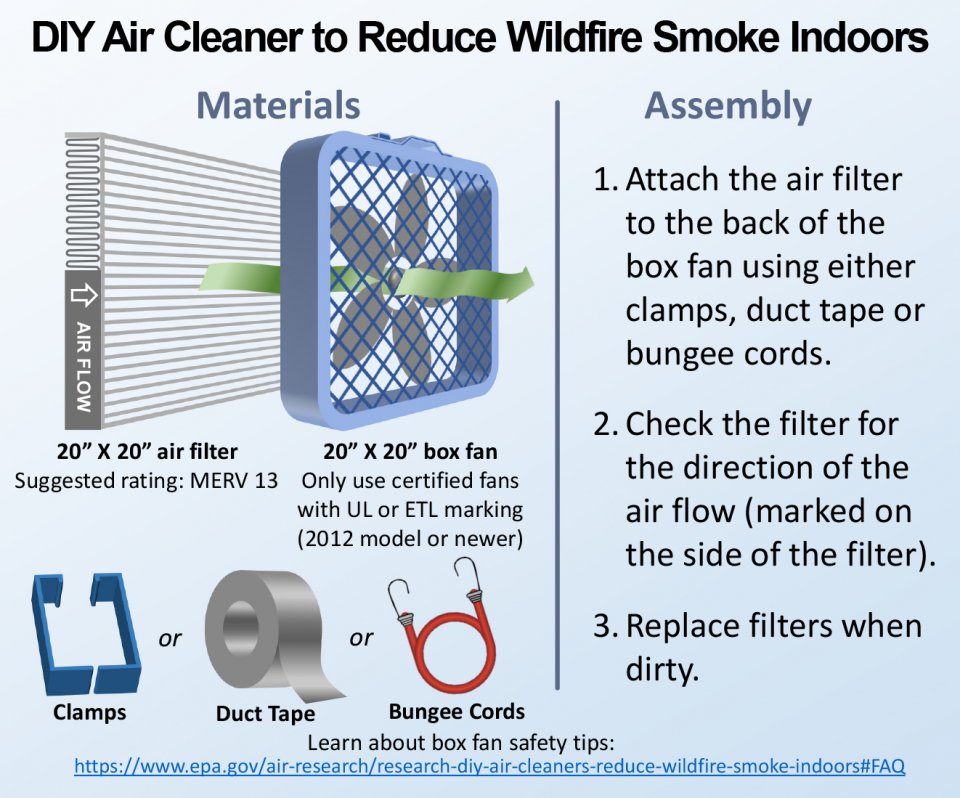
PG&E’s Medical Baseline Program
Apply to obtain a backup battery to power your medical equipment with the Community Wildfire Safety Program Support for Medical Baseline Customers. PG&E provides information on how to find a cooling center location by zip code.
Preparation Tips
To prepare to evacuate your home due to a wildfire, make sure to take your respirator supplies.
- Have enough supplies to last several days.
- Pre-package a kit to have many of the items ready to go.
- Place items in a bag or backpack that is easy to grab.
- The goal is to continue your respiratory medications and therapies even when away from home.
- Fill in emergency contact information and print this document to take with you.
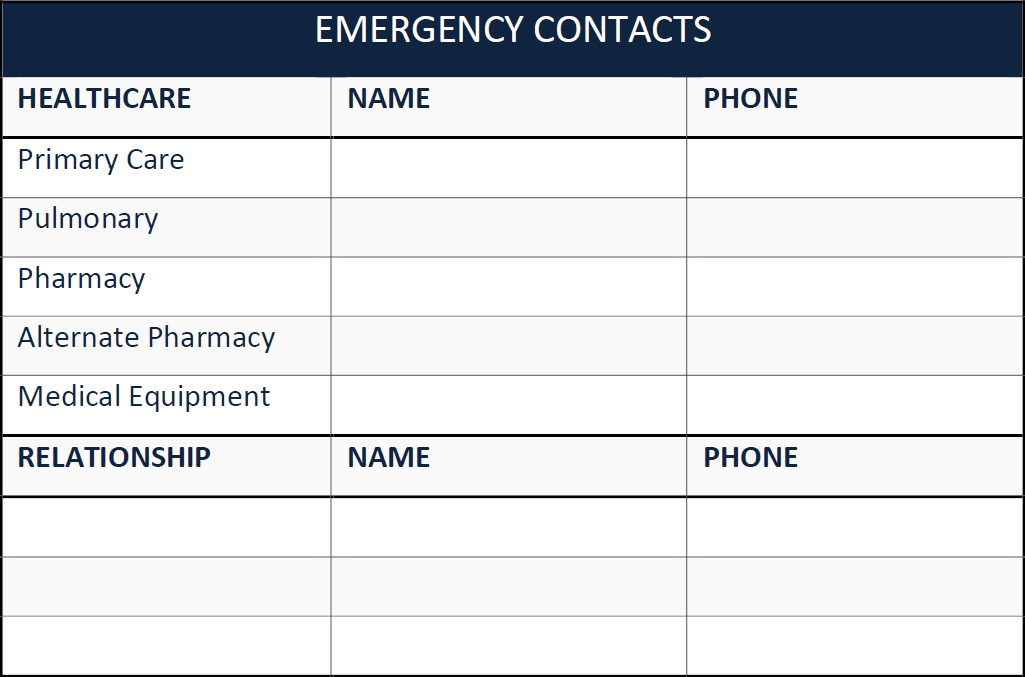
Local Evacuation Routes
Sign up for text alerts about wildfires in your area and know your community’s emergency response plan, evacuation orders and evacuation centers. Find more information at CAL FIRE Incidents.
Respiratory medications:
- Daily maintenance and rescue respiratory inhalers with spacer and/or nebulized medications.
- Emergency medications if prescribed (prednisone and antibiotics)
- Asthma or COPD Action Plan
Nebulizer machine with supplies:
- Power cord/car charger/extra batteries
- Nebulizer medication cups with mouthpiece/facemask and tubing
Oxygen and Supplies:
- Portable oxygen concentrator (POC) or portable oxygen tanks
- Stationary concentrator
- Extra nasal cannulas and tubing
- Pulse oximeter to monitor oxygen levels.
CPAP/BIPAP or Non-Invasive Ventilation:
- CPAP/BiPAP/NIV with power cord
- Mask, hose and an extra filter
- Distilled water for humidifier
Airway Clearance Devices:
- Handheld oscillatory device (e.g., Aerobika, Acapella)
- Airway clearance vest with power cord

